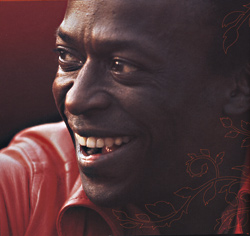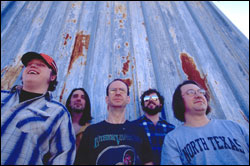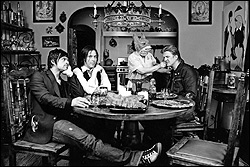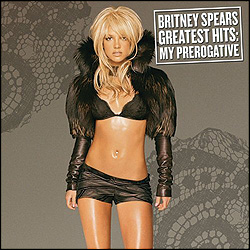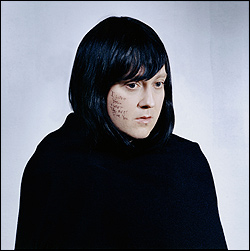When it comes to Miles Davis, “unreleased” is often a marketing euphemism for “unedited.” More than half the tracks on the 2003 box The Complete Jack JohnsonSessions, for instance, were already available in some form or another, spread across five Davis albums. So no matter what you think of the music collected on the new six-disc Miles Davis box, The Cellar Door Sessions 1970 (Columbia/Legacy), which covers a half-dozen live sets that were recorded over four December nights in D.C., you’ve got to admit one thing—you haven’t heard it before.
Well, you’ve maybe heard 85 minutes of it, largely pruned of melody and spliced together into the 1971 set Live-Evil, which has just been surpassed by this six-plus-hour behemoth as Davis’ most accessible collection of funk. Not his most purely accessible jazz-rock, mind you—A Tribute to Jack Johnson remains the most straightforward entry point for rockers, the solo-oriented Black Beauty still the most simpatico for anybody approaching from a jazz angle. And it ain’t the funkiest, not by far. The hellhound-fleeing Dark Magus and the mysterioso Agharta remain the locales where Miles works his deepest rhythmic voodoo. But when it comes to an inviting linear pulse, The Cellar Door Sessions box is one to groove on.
And what a disarming invitation it is, with the opaque Bitches Brew barely casting a shadow from behind and the bottomless whorl of Miles’ mid-’70s future only faintly intimated. By the time he and his band began their string at the Cellar Door, a Washington, D.C., club, most of the Bitches Brew material had already been discarded in favor of songs that are little more than insistent vamps, and up against the bare-bones bass riffage of “Honk Tonk” or “What I Say,” Joe Zawinul’s “Directions” sounds, even in its drastically reduced form, as melodically rich as Gershwin. But if this box set, like most, is redundant, the simplicity of the compositions works in its favor. Comparing four or five versions of the same song will always be mere busywork for geeks and scholars, but given the basic nature of these tunes, each musician must heroically exert himself to keep himself interested. And I’m not even talking about Keith Jarrett’s keyboard eruptions, Gary Bartz’s fluttering sax, or Miles’ own deft counterpunches. It’s drummer Jack DeJohnette beefing up the beat and, even more so, bassist Michael Henderson juicing those riffs with something new each time that define these recordings.
Critics often accept the role of psychoanalysts when it comes to Davis’ combos, attempting to suss out how the leader’s treatment of his musicians forged a particular mood. In that light, it’s telling that Henderson still expresses exuberance at being allowed to participate in these sessions—in fact, he considers Miles something like a father. Henderson had been playing with Aretha Franklin and Stevie Wonder—Miles allegedly approached the Motown wunderkind and growled, “I’m taking your fuckin’ bassist”—and later became one of the elements that kept Marvin Gaye’s What’s Going On from being stranded in the MOR. There’s something remarkably sane and rooted here about Henderson’s playing—he’s a bottom-end superego who takes pleasure in his endless, if slight, variations.
There’s some historical vindication for Henderson here. The entire chunk of these recordings used on Live-Evil was extracted from the two sets on Dec. 19, the one night John McLaughlin joined the band, and the night Henderson sounds least assured. No wonder: Miles with electric guitar is very different from Miles without, for reasons that are philosophical as much as musical. Whether allowing McLaughlin to rock out on Jack Johnson or encouraging Pete Cosey to generate sonic fog on Agharta, Miles prefers the guitar to play an elemental role. But here McLaughlin merely sits in, and he upsets the balanced alchemy of the group. The first four discs build upon a contrast between the steady low end and a mercurial top. Miles instructed Henderson not to follow Keith Jarrett’s florid excursions, and the bassist obeyed. As a result, Miles is free to battle Jarrett in midair: When Jarrett launches a cascade of keys, Miles battles him to a draw with a quick trumpet blast; and when Jarrett retreats to a vamp, the bandleader emits a more intricate figure of his own.
“Electric jazz might have gone in a different direction if this music had been released sooner . . . ,” announces Adam Holzman in the booklet notes. Complete that portentious ellipsis as you will, since Holzman doesn’t fully back that thesis up. Given how little tutelage the masters of electric jazz took from Miles, why would we expect them to learn from these recordings? Well, for starters, The Cellar Door Sessions have a greater affinity with fusion as it was commonly practiced. And so, they could have provided a blueprint that nongenius musicians could have capably built upon. In short, Miles, for once, sounds imitable. He wasn’t, of course. But it would have been interesting to hear someone try.
